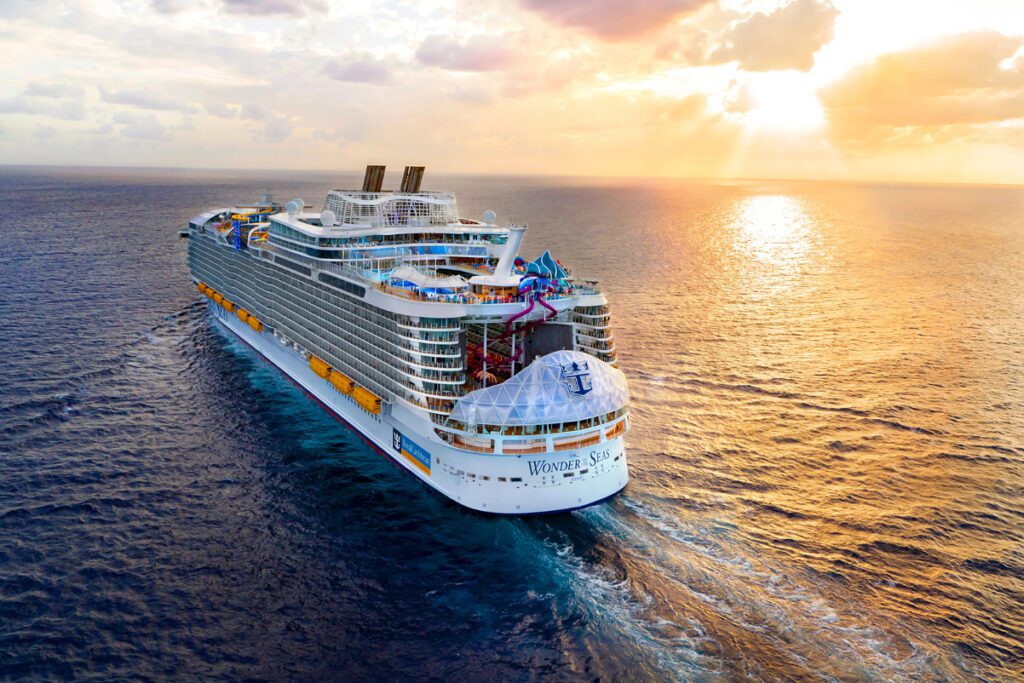
Skift Take
Young travelers are flocking to cruise ships, and Royal Caribbean is cashing in by creating private ports and islands as new attractions.
Royal Caribbean Group said Tuesday that vacationers are spending more on its cruises and that it expects higher pricing in 2025. Executives discussing third-quarter results also said the majority of customers are new to cruises or their brands, and they discussed using AI to set prices and plans for a new private destination in Mexico.
“Third quarter results exceeded our expectations due to strong close-in demand and at higher prices on all of our key itineraries, coupled with continued strength in onboard revenue,” said Royal Caribbean CEO and president Jason Liberty.
A key metric for interpreting cruise operator profitability is net yield — the money remaining per available passenger cruise day after variable expenses, such as commissions to travel agents.
Royal Caribbean forecasted that its net yield would rise about 5% year-over-year in the fourth quarter. The figure represented strong pricing power but also showed a cool down in a post-pandemic surge in travel spending. Last year, the operator saw a roughly 18% jump in net yield compared with 2019.
Growth Plans
On Tuesday’s earnings call, Liberty’s most-repeated phrase was “moderate capacity growth, moderate yield growth, and strong cost control” — which he referred to multiple times as the company’s “proven formula” or “formula for success.”
Royal Caribbean, which recently launched the world’s largest cruise ship, Icon of the Seas, said its overall fleet would grow 8% in full-year 2024 and 5% in 2025.
Texas is a key growth market. The state has a roughly similar number of potential cruise-goers as Florida. Yet, Royal Caribbean is generating roughly half as much demand in Texas as it gets from Florida.
Pricing Power and New Tech
Royal Caribbean said it partly benefited from having introduced AI-based revenue management software. The tools more accurately track shifts in supply and demand, improving the group’s ability to set the best prices to match goals for profit margin and occupancy.
“Obviously, our yield management tools get smarter and better every day,” Liberty said. “We look back and say we had some regret that in the past we’ve left revenue on the table. The tools would have said we should have slowed a little bit our bookings. We were probably too conservative.”
“Half of our onboard revenue in the third quarter was purchased through our AI-driven pre-cruise channels,” Liberty said.
Persuading customers to spend more onboard before they actually get on the ship is a key strategy.
“More than 70% [of our customers typically] purchase onboard activities before they sail, and they spend more than double compared to those who only make purchases on board,” Liberty said.
Growing Its Private “Destinations”
One way Royal Caribbean and its competitors have been increasing sales since 2019 is by creating itineraries with stops on their own private ports or islands. These so-called “destinations” are lucrative because the cruise line collects a much larger chunk of the money passengers spend on food, activities, and souvenirs rather than locals.
Royal Caribbean highlighted plans for a new “Perfect Day” private destination in Mexico set to open in 2027. It revealed Tuesday it had spent $292 million to acquire a port in Mahahual on Mexico’s Caribbean coast.
The company likes its private destinations because it can better “control” the experience than it can when its ships visit traditional local ports.
“Perfect Day CocoCay is our highest-rated destination on a Net Promoter Score,” Liberty said.
The operator also said it’s building what it calls the “Southernmost hotel on Earth” in Chile to support its Antarctica expeditions. The hotel will be under the Silversea brand.
Attracting Younger and First-Time Customers
“The majority of our guests this year are either new to cruise or new to our brands, while at the same time, our loyalty guests are up 20% compared to last year,” Liberty said.
“Millennials, families, and active cruisers are all over-indexing on both leisure travel and specifically cruise travel,” he added.
Positive Signals for 2025 Bookings
The company said that, in October, advance bookings for 2025 were outpacing 2024 levels.
Royal Caribbean market research suggests that U.S. consumer spending on discretionary leisure items has grown faster than most other spending categories in the past year and that spending on travel has grown faster than other leisure categories. Liberty said these trends should continue over the next year.
Royal Caribbean tends to attract more middle-class and upper middle-class customers than some of its fellow cruise lines and competitive land-based resorts. The average household income of its customers is about $120,000.
“American households are wealthier than ever, with continued wage growth and low unemployment driving strong consumer spending,” Liberty said.
Sturdier Finances
The major cruise operators had to load up on debt during the pandemic period of reduced sailings. Royal Caribbean said it had finally returned to fully unsecured capital structure this month by refinancing $3.5 billion in debt at better repayment terms and without needing to put up its ships and terminals as collateral.
Executives believe this financial stability will enable them to pursue their growth plans more quickly.

